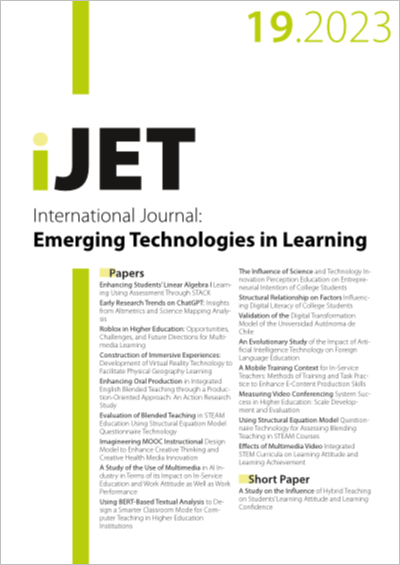Enhancing Students’ Linear Algebra I Learning Using Assessment Through STACK
DOI:
https://doi.org/10.3991/ijet.v18i19.42371Keywords:
Linear Algebra I, STACK, Learning, AssessmentAbstract
E-learning is seen as a new philosophy of education that encompasses all existing forms of education, including full-time education. Currently, there is a wide variety of software for developing interactive content. The aim of this study is to improve students’ learning of Linear Algebra I using STACK (the system for teaching and assessment using a computer algebra kernel) at Bahir Dar University. The experience of using STACK questions has shown that their application helps students of all forms of education in learning Linear Algebra I and greatly facilitates the learning process of students, allowing them to master the contents of Linear Algebra I. In a mastery quiz, students try different algebra content repeatedly until they understand the concept. After students have mastered the content, they take a test quiz. Moreover, STACK helps teachers in a scoring (cumulative) system of knowledge assessment, makes the learning outcomes more visible and convenient for analysis. In addition, it is noted in the research that the STACK tasks allow students to review analytical solutions to complex types of problems and organize hints that help them to solve tasks. The approach saves the teacher’s time to check solutions at any time and give students individual options for tasks. As part of the study, the STACK tasks were analysed, which revealed a greater number of advantages of learning and assessment compared to its disadvantages and revealed the possibility of its application in the educational process. It is recommended that educational policy makers must integrate STACK into a curriculum of Mathematics.
Downloads
Published
How to Cite
Issue
Section
License
Copyright (c) 2023 Adem Ahmed, Dr Abdu Mohammed

This work is licensed under a Creative Commons Attribution 4.0 International License.



